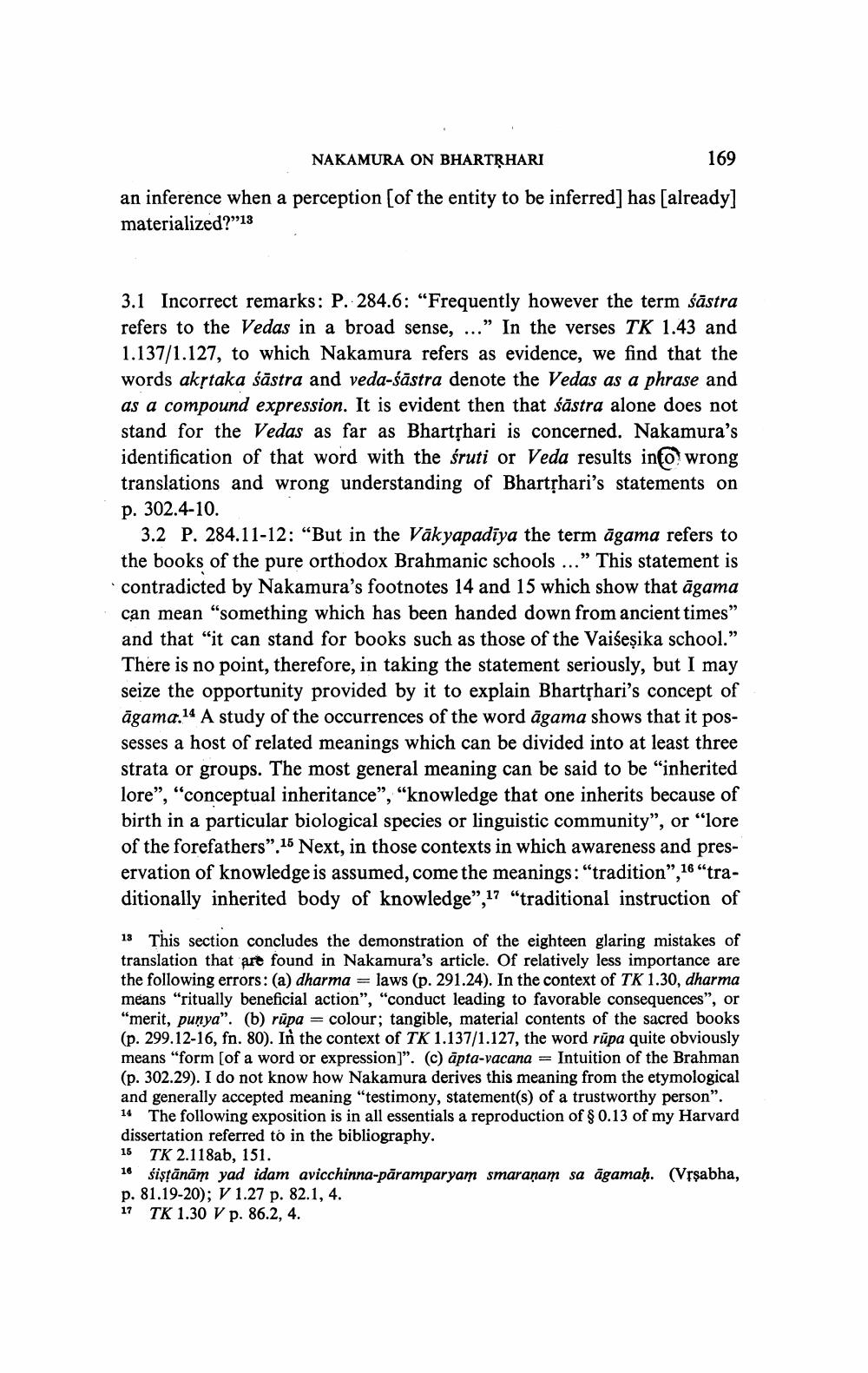Book Title: Nakamura On Bhartrhari Author(s): Ashok Aklujkar Publisher: Ashok Aklujkar View full book textPage 9
________________ NAKAMURA ON BHARTķHARI 169 an inference when a perception (of the entity to be inferred] has already] materialized?"13 3.1 Incorrect remarks: P. 284.6: "Frequently however the term śāstra refers to the Vedas in a broad sense, ..." In the verses TK 1.43 and 1.137/1.127, to which Nakamura refers as evidence, we find that the words akstaka śāstra and veda-śāstra denote the Vedas as a phrase and as a compound expression. It is evident then that śāstra alone does not stand for the Vedas as far as Bhartshari is concerned. Nakamura's identification of that word with the śruti or Veda results info wrong translations and wrong understanding of Bhartshari's statements on p. 302.4-10. 3.2 P. 284.11-12: “But in the Vākyapadiya the term āgama refers to the books of the pure orthodox Brahmanic schools ..." This statement is 'contradicted by Nakamura's footnotes 14 and 15 which show that agama can mean "something which has been handed down from ancient times." and that "it can stand for books such as those of the Vaiseșika school.” There is no point, therefore, in taking the statement seriously, but I may seize the opportunity provided by it to explain Bharthari's concept of āgama.14 A study of the occurrences of the word āgama shows that it possesses a host of related meanings which can be divided into at least three strata or groups. The most general meaning can be said to be “inherited lore", "conceptual inheritance", "knowledge that one inherits because of birth in a particular biological species or linguistic community”, or “lore of the forefathers”.15 Next, in those contexts in which awareness and preservation of knowledge is assumed, come the meanings: "tradition", 16"traditionally inherited body of knowledge”,17 "traditional instruction of 13 This section concludes the demonstration of the eighteen glaring mistakes of translation that are found in Nakamura's article. Of relatively less importance are the following errors: (a) dharma = laws (p. 291.24). In the context of TK 1.30, dharma means "ritually beneficial action", "conduct leading to favorable consequences", or "merit, punya". (b) rūpa = colour; tangible, material contents of the sacred books (p. 299.12-16, fn. 80). In the context of TK 1.137/1.127, the word rūpa quite obviously means “form (of a word or expression)". (c) apta-vacana = Intuition of the Brahman (p. 302.29). I do not know how Nakamura derives this meaning from the etymological and generally accepted meaning "testimony, statement(s) of a trustworthy person". 14 The following exposition is in all essentials a reproduction of $ 0.13 of my Harvard dissertation referred to in the bibliography. 15 TK 2.118ab, 151. 16 sistānām yad idam avicchinna-pāramparyam smaraṇam sa āgamaḥ. (Vrşabha, p. 81.19-20); V 1.27 p. 82.1, 4. 17 TK 1.30 V p. 86.2, 4.Page Navigation
1 ... 7 8 9 10 11 12 13 14 15
